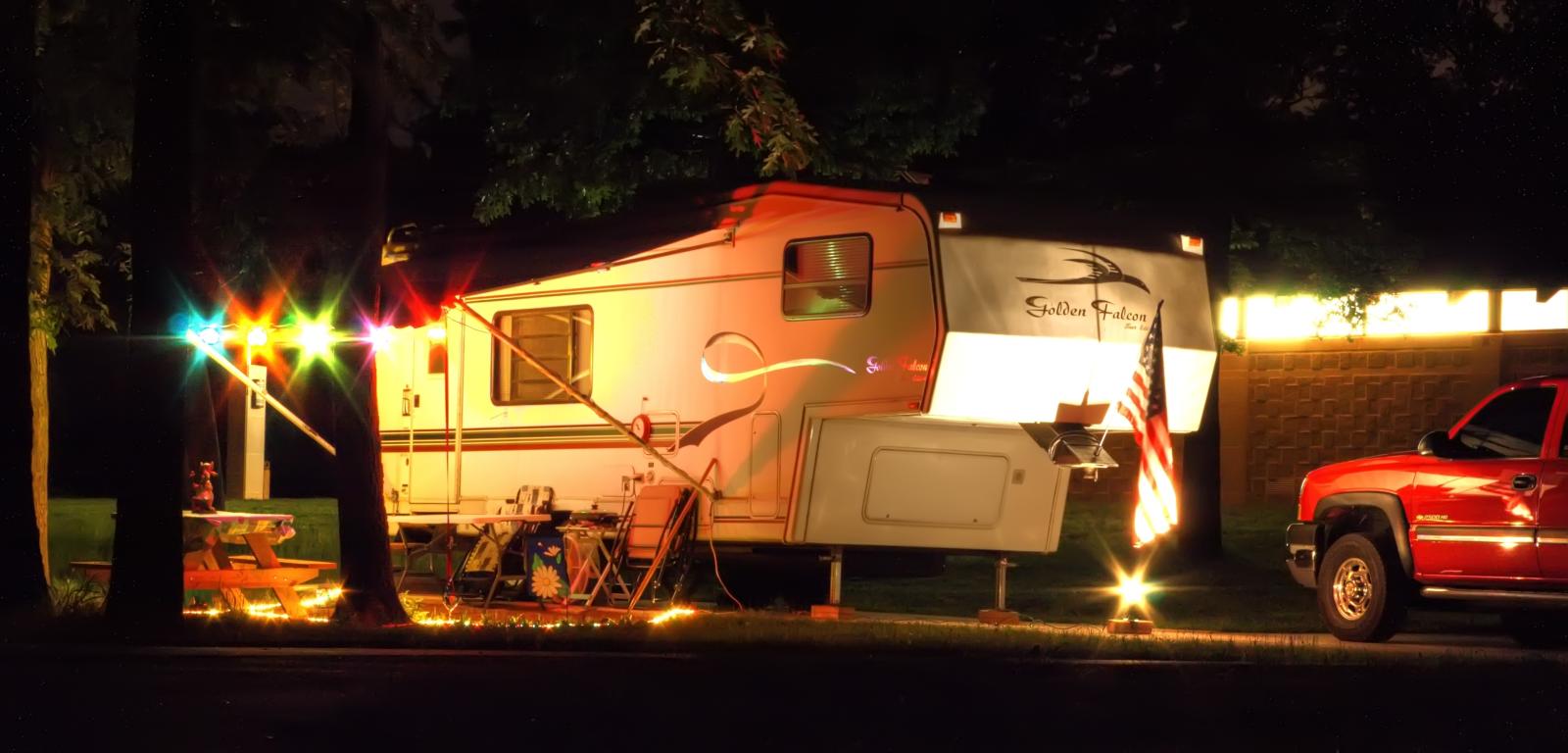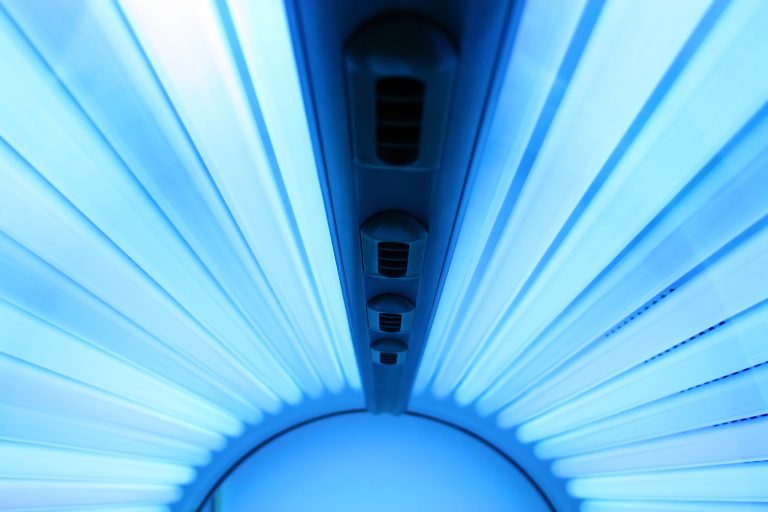
Short Answer
You should not plug your RV into a dryer outlet. Although the plugs may look similar, they handle different amounts of voltage and/or amperages. Plugging your RV into a dryer electrical outlet could damage your batteries, your house’s electrical system, and in the some cases, start a fire. However, there are ways to get power to your RV from your home or generators that we explore below.
Intro
Embarking on the open road in your RV brings a world of adventure, but ensuring a steady and secure power supply for your RV requires careful planning. In an effort to power your RV you may have asked yourself: “Is it possible to plug my RV into my home’s dryer plug?” In this post, we delve deep into this question, examining feasibility, safety measures, and potential alternatives for those looking to power their RVs through their dryer socket.
Considerations
Understanding Dryer Outlets
Dryer outlets, often referred to as dryer plugs or receptacles, are unique electrical installations designed to deliver ample power for clothes dryers. These outlets come in two primary configurations: the 3-prong and the 4-prong plugs, each with distinct voltage and grounding arrangements. These outlets are usually linked to a dedicated circuit breakers within your home’s electrical system to ensure efficient power distribution. A typical electric dryer in a home is supplied 240v and is connected to a 30A breaker.
RV Power Requirements
Modern RVs come equipped with a diverse array of electrical appliances, ranging from air conditioning units and space heaters to water pumps and even larger devices like electric stoves. These appliances have varying power demands, making it crucial to choose the right power source. Most contemporary RVs are outfitted with either 30-amp or 50-amp plugs, offering sufficient power capacity to cater to these needs. Older or small RVs may have 30 amp service where as larger RVs, including Class A motorhomes and 5th wheels, may require a 50-amp service for optimal performance.
Voltage Discrepancies and Wiring Complexities
A standard household dryer outlet is wired with two hot wires, often referred to as “hot legs,” a neutral wire, and in the four prong case a ground. However, RVs rely on either 30-amp or 50-amp plugs, each demanding a specific voltage level. A 30-amp RV plug operates at 120 volts AC, while its 50-amp counterpart operates at 240 volts AC. This substantial difference necessitates a unique wiring setup. Given a typical electric dryer setups there is a mismatch of either voltage or amperage between either 120v 30A or 240v 50A RV options and the 240v 30A dryer outlet.
Safety: Avoiding Overloads and Ensuring Compatibility
Attempting to connect your RV to a dryer outlet without a comprehensive understanding of the voltage and wiring distinctions can pose significant risks. Insufficient power provision or mismatched wiring is a safety issue and could trigger power surges, electrical fires, and damage to both your RV and your home’s electrical infrastructure. In the worst-case scenario, it could jeopardize personal safety.
Equipment in the loop
Circuit Breakers
Circuit breakers serve as indispensable safety components, guarding against electrical circuit overloads. These protective devices trip when a circuit is overwhelmed by current, effectively cutting off power to prevent harm. However, plugging your RV into an outlet with an inadequately rated circuit breaker could lead to frequent tripping and potential damage.
Surge Protectors
Additionally there are other potential electrical issues you need to consider like power surges. To counteract the risks posed by power surges and electrical anomalies, investing in a surge protector specifically designed for RV usage is a prudent move. This device shields your RV’s delicate electronics from sudden voltage fluctuations and spikes.
Wiering
Not all wiring is the same and depending on your service you need to make sure the wires delivering the power to your RV are rated for the load. The longer the distance, the thicker (lower gauge) the wire you’ll need to minimize voltage drop and ensure safe and efficient power delivery. For a typical RV hookup, you would use one of the following wire sizes:
50 amp service:
- 6 AWG (American Wire Gauge): This is a common choice for shorter runs, up to about 50 feet. It can handle 50 amps at 120/240 volts with minimal voltage drop.
- 4 AWG: If your RV hookup is between 50 to 100 feet from the power source, you may want to consider using 4 AWG wire to ensure proper voltage delivery.
- 2 AWG: For longer runs, exceeding 100 feet, or if you want to have a significant safety margin, you can use 2 AWG wire. It can handle 50 amps at 120/240 volts over long distances with minimal voltage drop.
30 amp service:
- 10 AWG (American Wire Gauge): This is a standard wire size for 30-amp RV service for short to moderate distances, typically up to about 50 feet. It can safely handle 30 amps at 120 volts.
- 8 AWG: If your RV hookup is between 50 to 100 feet from the power source, you may want to consider using 8 AWG wire to minimize voltage drop.
Always check the local electrical codes and regulations as they may vary by location. It’s also a good practice to consult with a licensed electrician to determine the exact wire size and specifications required for your specific RV setup, as factors like voltage drop, temperature, and load demand can influence the wire size selection.
Possible Solutions:
Given the intricate landscape and potential hazards, plugging your RV into a dryer outlet is generally ill-advised. Instead, explore these safer alternatives:
Caution: If you’re considering any form of electrical system modification, seek guidance from a certified electrician. They possess the expertise to evaluate the feasibility and safety of any proposed changes, ensuring they align with building codes.
Dedicated Circuit Installation:
For consistent RV usage at home, contemplate installing a dedicated 30-amp or 50-amp RV outlet. Having a licensed electrician install an outlet that meets the power demands of your RV and adheres to your local building codes is a great option. This ensures that you are safely supplying your RV with its power needs without overloading your houses electrical system. Additionally, you get the benefit of having a dedicated plug for your RV so you can always have a place to plug in at your home.
Portable Generators:
For remote RV adventures, portable generators provide a viable power solution without jeopardizing your home’s electrical infrastructure. Ensure your selected generator boasts the capacity to satisfy your RV’s power demands.
Choosing the right generator for your RV, whether it’s 30-amp or 50-amp circuit, involves considering various factors to ensure you have a reliable power source during your travels. Here’s a step-by-step guide to help you pick the best generator for your RV’s power needs:
Step 1: Determine Your RV’s Amp Requirement
Identify Your RV’s Amp Rating: Check your RV’s electrical system to find out if it’s a 30-amp or 50-amp service. This information is crucial for selecting a generator that can provide the necessary power.
Step 2: Calculate Required Wattage
Calculate Wattage: Multiply the amp rating of your RV (30 or 50) by the standard voltage (120 volts for 30-amp and 240 volts for 50-amp) to determine the required continuous wattage.
For a 30-amp RV: 30 amps * 120 volts = 3,600 watts
For a 50-amp RV: 50 amps * 240 volts = 12,000 watts
Step 3: Consider Generator Options
Wattage: Choose a generator with sufficient wattage capacity to power your RV comfortably. Add up the power (watts) of the loads you intend on running and use that as a guide to select a generator. You may want to consider getting a generator with slightly higher wattage than the calculated requirement to handle power surges and future additional appliances.
Fuel Type:
Decide whether you prefer a gasoline, propane, or dual-fuel generator. Each type has its pros and cons in terms of fuel availability, efficiency, and storage.
Noise Level:
Opt for a generator with quieter operation like the inverted generators, especially if you plan to camp in quiet areas or campgrounds with noise restrictions.
Portability:
If you’ll be transporting the generator frequently, look for models with built-in handles and wheels for easier mobility and how much does it weigh. After all, you are going to have to be picking the generator up to move it outside to run it so unless you have a ramp, like in a toy hauler, think about what is a reasonable weight for you to lift.
Runtime:
Check the generator’s runtime at a specific load level to ensure it can power your RV for the duration you need without constant refueling. Also, note that many inverted generators will adjust their engine speed depending on the load attached so they can be more fuel efficient than open frame generators.
Inverter vs. Conventional:
Consider an inverter generator if you need clean and stable power for sensitive electronics in your RV like cell phones and laptops. Also, inverter generators typically are much quieter than open frame options so your neighbors will thank you.
Outlets and RV Compatibility:
Ensure the generator has the appropriate outlets to match your RV’s power cord or can be adapted to do so.
Reliability and Brand Reputation:
Choose generators from reputable brands with positive reviews and a history of producing reliable products.
What size generator do I need for my RV?:
Like most things it depends…so here are three different scenarios to consider
Low Power Consumption appliances:
If you are not planing on using things that generate heat like a coffee pot, curling iron, hair dryer, hot plate, or space heater. Than you could get away with a 2000W generator for just small appliance usage. EX: If you are powering lights, a refrigerator (powered by propane), a furnace (powered by propane), and maybe one heating device like a coffee pot but not an AC than you may be able to get away with a 2000 watt generator.
If you are running one AC some lights and charging your phones and laptops and not using large power consumption appliances like heaters or blowdryers than you can work with a 4500 watt generator. One thing to consider is the weight though, the 4500 watt generators may become difficult to pickup an and move around so it may be a good idea to look at the next solution.
An alternative solution is to get a pair of 2k generators and get a parallel kit so that connected together they work as a 4k generator so that it is easier to lift and transport. The duel 2k generators also provides modularity, if you just need one because you are not running the AC than just pull out one. But, when you need the full 4k you have the second one to plugin in parallel to run your AC and a few lower power consumption items.
Step 4: Generator Recommendations
Here are some generator recommendations for both 30-amp and 50-amp RVs:
For 30-Amp RVs:
GENMAX Portable Inverter Generator,2200W: One of these can run small loads where as two hooked together in parallel should be able supply the full 3600 watts (30amp * 120v = 3600 W) for a 30 amp service RV. This generator is able to supply a startup wattage of 2200W and a running wattage of 1800W. This generator is also capable of being hooked up in parallel to provide a combined 3600W at 120V.

For 50-Amp RVs:
GENMAX Portable Inverter Generator, 7250W: This generator is capable of providing 120v at 50 amps or 240v at 25 amps. However, you can connect two together to get 240v at 50 amps if you need that option.

Step 5: Read Reviews and Compare
Research user reviews, check forums, and compare features of the generators you’re considering. Pay attention to factors like reliability, ease of use, fuel efficiency, and customer support and weight.
Step 6: Budget Consideration
Lastly, factor in your budget. While investing in a quality generator is essential for a hassle-free experience, choose an option that fits within your financial constraints.
By following these steps and carefully evaluating your options, you’ll be well-equipped to choose a generator that perfectly matches your RV’s power needs, ensuring a comfortable and enjoyable journey.
Other Notes
Reliable Extension Cord Usage: During temporary RV stays, be sure to use a robust extension cord designed for outdoor use and for RVs. All of the links in your power system matter so do not forget to use a properly sized extension cord. Always verify that the extension cord’s gauge can handle the anticipated power load.
Conclusion
While the allure of utilizing a dryer outlet to power your RV may be enticing, comprehending voltage disparities, wiring complexities, and potential hazards is paramount. In the pursuit of a safe and reliable power source for your RV, prioritize safety and expert consultation before embarking on any electrical system modifications. Whether your journey takes you cross-country or to the tranquility of an RV park, ensuring a dependable and secure power supply should always be on the top of your priorities list.



